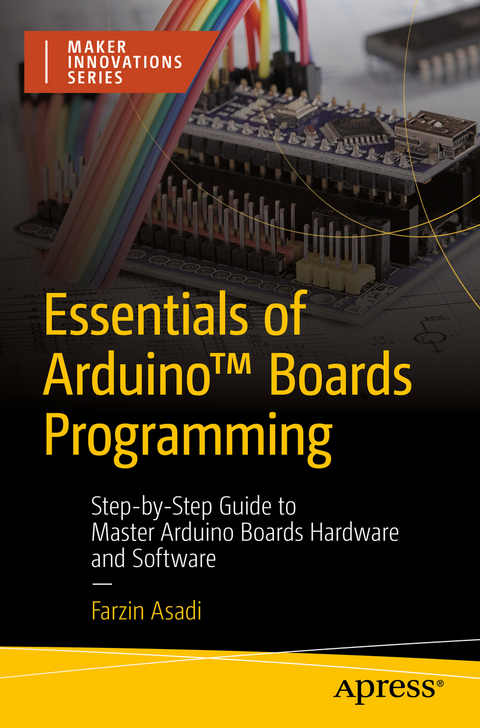
Essentials of Arduino™ Boards Programming
Apress (Verlag)
978-1-4842-9599-1 (ISBN)
You'll start with an introduction to Arduino and see firsthand how its free multi-platform integrated development environment (IDE) makes coding easier. In many cases, you can edit the given codes to solve your own problems. Arduino boards use a variety of microcontrollers and each board is suitable for a specific application. The Arduino IDE is also preloaded with a broad library of codes that you can modify and practice with. So instead of coding from scratch you can adjust the codes for similar projects. More experienced users will save time by simply copying nuggets of code from the various libraries.
You'll also learn about digital input/output (I/O), analog-to-digital and digital-to-analog converters, LCDs and EEPROM. The book then moves on to serial communication, mathematical functions, and pulse width modulation (PWM), all important features when encoding in telecommunications. Finally, you'll see how to control different types of motors, review interrupts, internal comparators, and timers, and read different sensors with Arduino.
What You Will Learn
Turn on/off a device using a relay
Generate analog/digital output
Read an analog/digital input
Control motors with a parallel virtual machine (PVM) and serial communication
Display text with LCDs
Read sensors with Arduino and use the interrupts
Write more efficient codes with interrupts and timers
Who This Book Is For
Engineering (electrical/computer/biomedical/robotic/mechatronics/aerospace) and science (math/physic/chemistry) students, makers, and hobbyists. Being familiar with a programming language (especially C) is an advantage, however, it is not necessary.
Farzin Asadi received his B.Sc. in Electronics Engineering, his M.Sc. in Control Engineering, and his Ph.D. in Mechatronics Engineering. Currently, he is with the Department of Electrical and Electronics Engineering at the Maltepe University, Istanbul, Turkey. Dr. Asadi has published over 40 international papers and 19 books. He is on the editorial board of seven scientific journals as well. His research interests include switching converters, control theory, robust control of power electronics converters, and robotics.
Chapter 1: Introduction to Arduino Boards.- Chapter 2: Digital Input Output (I/O).- Chapter 3: Analog to Digital Converter (ADC) and Digital to Analog Converter (DAC).- Chapter 4: LCD and EEPROM.- Chapter 5: Serial Communication.- Chapter 6: Mathematical Functions.- Chapter 7: Pulse Width Modulation (PWM).- Chapter 8: Control of Different Type of Motors.- Chapter 9: Interrupts and Internal Comparator.- Chapter 10: Timers.- Chapter 11: Reading Different Sensors with Arduino.
| Erscheinungsdatum | 08.08.2023 |
|---|---|
| Reihe/Serie | Maker Innovations Series |
| Zusatzinfo | 211 Illustrations, black and white; XIX, 332 p. 211 illus. |
| Verlagsort | Berkley |
| Sprache | englisch |
| Maße | 155 x 235 mm |
| Themenwelt | Informatik ► Weitere Themen ► Hardware |
| Schlagworte | A/D Converter • Arduino board • arduino programming • Arduino Uno • Digital I/O • Microcontroller • Servo Motor |
| ISBN-10 | 1-4842-9599-4 / 1484295994 |
| ISBN-13 | 978-1-4842-9599-1 / 9781484295991 |
| Zustand | Neuware |
| Haben Sie eine Frage zum Produkt? |
aus dem Bereich


